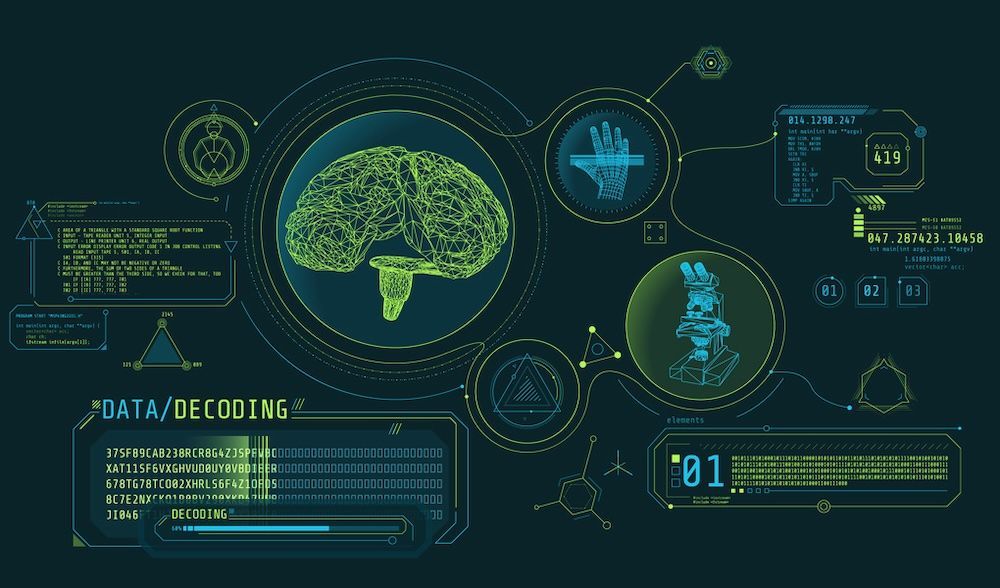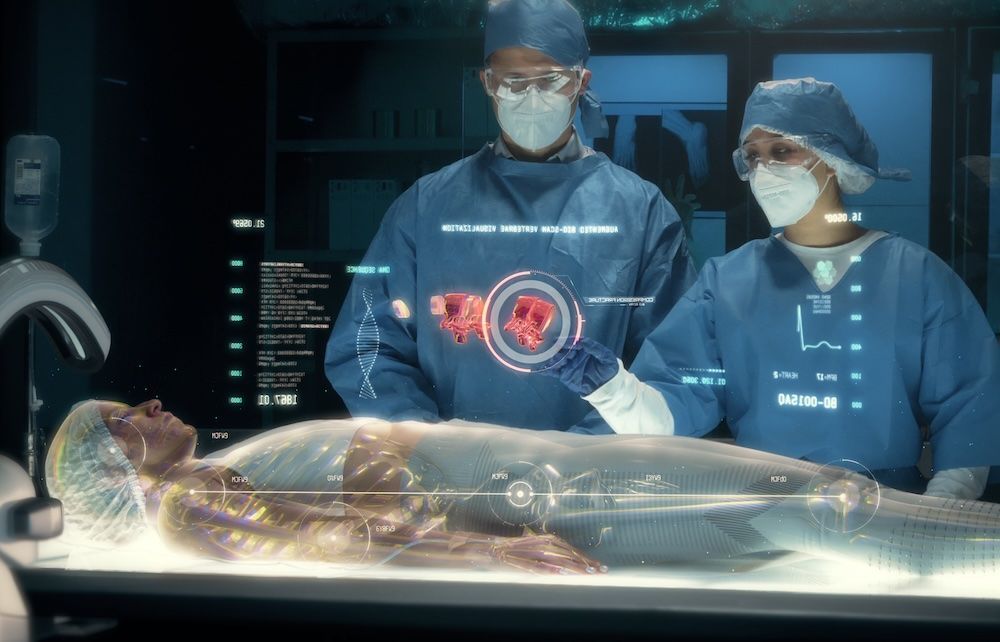What are some of the key factors when selecting modalities in clinical simulation? Based on an Avkin 2023-2024 international survey, each simulation modality currently available in the market has benefits and drawbacks. Avkin is dedicated to meeting the healthcare simulation needs and scans the healthcare simulation community for gaps that need to be addressed to provide better learning opportunities. Supported by Avkin, this HealthySimulation.com article will review the strengths and areas of concern of four clinical simulation modalities: Extended Reality (AR/VR/XR), standardized or simulated patients, patient manikins, and hybrid simulation with wearable simulators.
Extended Reality Expands New Training Paradigms
Extended Reality (XR) is the newest market offering, which includes both augmented (AR) and virtual (VR) reality. VR has shown promise in the industry because small spaces are required and greater learner engagement. Twenty-one percent of survey respondents were unsure of the best practices resource to gather information on XR. Respondents expressed concern with virtual reality (VR) sickness. Research shows that 40%-70% of users report symptoms after 15 minutes of using a headset, requiring educators to create alternative assignments.
Augmented reality (AR) is newer than VR. AR requires a higher-cost headset that allows users to interact with their immediate surroundings to improve physical safety and reduce reports of VR sickness. Over 80% of respondents identified the high cost of AR integration and limited programmatic options as a limitation for purchase. In an attempt to address these, AR/VR companies report their products will eventually lead to cost savings, with learning being self-guided.
One concern mentioned in the XR literature is that according to the best practice standards, this modality is not considered simulation learning unless a debriefing occurs. Lack of debriefing requires novice learners to self-reflect on their actions without a faculty-led debriefing. This is akin to leaving 60% of the learning opportunity out of the education plan. One of the survey themes was that many learners enjoy this technology, however the learners need help with their soft skills. Experts recommend XR be utilized as a pre-simulation assignment in pre-licensure learning to prepare them for in-person simulation based learning. (Bauman, 2023). The second suggested use case is for experienced practitioners to utilize the technology as just-in-time practice prior to actual patient care.
Standardized or Simulated Patients (SPs) Offer Real Experiences
SPs modality was first introduced in the 1960s as a high-stakes test for first and third-year medical students. As the modality of healthcare simulation has grown, the integration of SPs have expanded to multiple health disciplines for formative and summative simulation learning. The majority of survey respondents reported the use of the INACSL Healthcare Simulation Standards of Best Practice and the Association for Standardized Patient Educators (ASPE) Standards as resources for best practices. Many survey respondents felt they would benefit from a subject matter expert (SME) to assist in the development of their SP program. One commercial offering for this mentoring is Avkin’s AvMentor program, a 12-month mentorship where educators are provided personalized assistance with starting an SP program.
Three benefits of SPs noted in the survey were the clinical accuracy, the ability for learners to work on soft skills, and the ability for the SP to provide feedback from the patient perspective. The most common cases were teaching soft skills, difficult conversations, change in patient condition, and hybrid simulation with wearable simulators. There were a plethora of use cases for the SP modality noted in responses. The top hindrances included the respondents felt inexperienced to run an SP program, potential for inconsistency between SPs, and limited ability to practice invasive procedures. Cost for running an SP program is one concern noted by simulationists. Ninety-three percent of survey respondents believed replacing some manikin simulation with a standardized patient program would eventually lead to cost savings for the simulation center.
View the LEARN CE/CME Platform Webinar Getting Started with Interprofessional Simulation and Wearable Simulators to learn more!
Wearable Simulators Offer Unique Training Realism
Wearable simulators first entered the market in 2016 with the release of the Strategic Operations Cut Suit and Avkin’s Avtrach, a wearable tracheostomy simulator. A wearable simulator is a product that is designed to be worn by a trained actor or standardized patient, replicates realistic human anatomy and physiology, and has an interactive user interface to extend the use of SPs, even when invasive procedures are necessary (Cowperthwait et al., 2021). The integrated user interface triggers appropriate “patient” reactions using haptic cues so the trained SP can realistically respond to the care being provided in real time during the simulation. The Cut Suit has been used significantly in the military/paramilitary for mass casualty and trauma training needs. Avkin was recognized by 81% of survey respondents as the leading educational and product specialists for healthcare wearable simulators.
The benefits for hybrid simulation with an SP and wearable simulator are the combination of human interaction, clinical accuracy, and software that is controlled by embedded sensors and seamless user interface for the facilitator. The outcome of hybrid simulation is fully immersed learners’ interaction with “patients” who have questions, fears, and human connection needs. Another benefit is the opportunity learners have to get patient-centered feedback during the debriefing (Johnson et al., 2020; Pate & Ricardo, 2016). There were a few limitations from the survey for wearables that includes the higher price than manual task trainers and the selection of wearables in the market is limited to meet educational goals for available tasks.
Avkin’s line of wearables includes nine products to address the needs of pre and post-licensure learners. Avkin wearables include:
- Avbirth is equipped with a lifecast ALS baby and optional iSimulate CTGI fetal monitor.
- Avtrach (tracheostomy)
- Avthor (chest tube)
- Avstick (IV)
- Avline (a central line)
- Avcath (urinary catheterization)
- Avwound (wound)
- Avband (simulated participant cueing device)
- Avtone (auscultation)
Survey respondents identified the ability to run a full range of uncomplicated and complicated birthing simulations with Avbirth. Another benefit according to the survey respondents is that the incorporation of wearables sets their simulation center apart from others in their area and attracts learners to their program.
Patient Simulators Support Hands-on Training in Key Ways
Manikin-based simulation began in the 20th century in the field of anesthesia and gained popularity early in the 21st century with broad sweeping adoption in the industry. Only 12% of survey respondents reported wanting to know more about manikin-based simulation, which could indicate that the commercial and intellectual market has been saturated.
The benefit of manikin-based simulation identified by survey respondents was the ability to do high-stakes, low-volume simulations on complex patient presentations. In these simulations, there is no possibility of physical or psychological harm to real patients or SPs. Respondents reported the most challenges with the manikin modality, stating that the technical issues, disjointed communication, and lack of realism often derailed learning and impacted outcomes. Seventy-five percent of respondents noted their manikin were out of service multiple times a year.
Reported technical struggles left 77% of respondents reporting they were dissatisfied with their suppliers’ technical support. Surveyors identified that a software glitch or loss of connection issues several times throughout a simulation day left simulationists frustrated. The second most reported barrier for this modality was lack of realistic verbal and nonverbal responses. Though some of the newer manikin technologies have attempted to overcome this barrier, respondents did not feel this additional technology option was worth the investment. One of the qualitative comments offered summarized this sentiment, “despite the eyes moving and other bells and whistles, they are still plastic people which will derail the simulation at one point or another”.
Simulation as an educational modality has been broadly accepted across the globe. Although research shows that manikin-based simulation is effective, the limitations and frustrations felt by both learners and operators has opened the way for alternative modalities. Many working in simulation education are incorporating AR/VR as a pre-simulation learning assignment and have expanded their in person simulations to include SPs, who can replicate the clinical interaction so closely that a trained expert can not tell the difference (Barrows, 1993).
Hybrid Simulation Offers Blended Learning Experiences
Wearable simulators have expanded the possibilities of hybrid simulation to include SPs in simulation learning experiences. Research shows the behaviors of learners in SP simulation is more natural, meaning it more closely replicates their actual clinical encounters. Wearable simulators have demonstrated the ability to be effective for developing communication, managing high stakes/low volume emergencies, and creating an environment that requires critical thinking skills. The simulation market is full of “tools for your tool belt”. Selecting the proper modality for the desired competencies will maximize outcomes, reduce frustration, and improve efficiency for simulationists and learners.
Learn More About Avkin to Meet Your Hybrid Simulation Needs!
References
- Barrows, H. S. (1993). An overview of the uses of standardized patients for teaching and evaluating clinical skills. AAMC. Academic medicine, 68(6), 443-51.
- Bauman, E., (2023). Virtual Reality: Where are we now – a recovering futurists perspective [Conference Presentation]. Mayo Clinic Healthcare Simulation Conference 2023: Elements, Essentials & Excellence in Healthcare Simulation, Rochester, MN.
- Cowperthwait, A.., Herrington, A., Anderson, K., Weldon, M. (2021). Task Trainer. In Maxworthy, J. C., Epps, C. A., Okuda, y., & Mancini, M. E., & Palaganas, J. C., (Eds.), Defining excellence in simulation programs. Lippincott Williams & Wilkins.
- Decker, S., Alinier, G., Crawford, S. B., Gordon, R. M., Jenkins, D., & Wilson, C. (2021). Healthcare simulation standards of best practiceTM The debriefing process. Clinical Simulation in Nursing, 58, 27-32.
- Johnson, K. V., Scott, A. L., & Franks, L. (2020). Impact of standardized patients on first semester nursing students self-confidence, satisfaction, and communication in a simulated clinical case. SAGE open nursing, 6, 2377960820930153.
- Pate, G., & Ricardo, L. (2016). Playing Sick: Training actors for high fidelity simulated patient encounters. The Journal of American Drama and Theatre, 28 (2).








